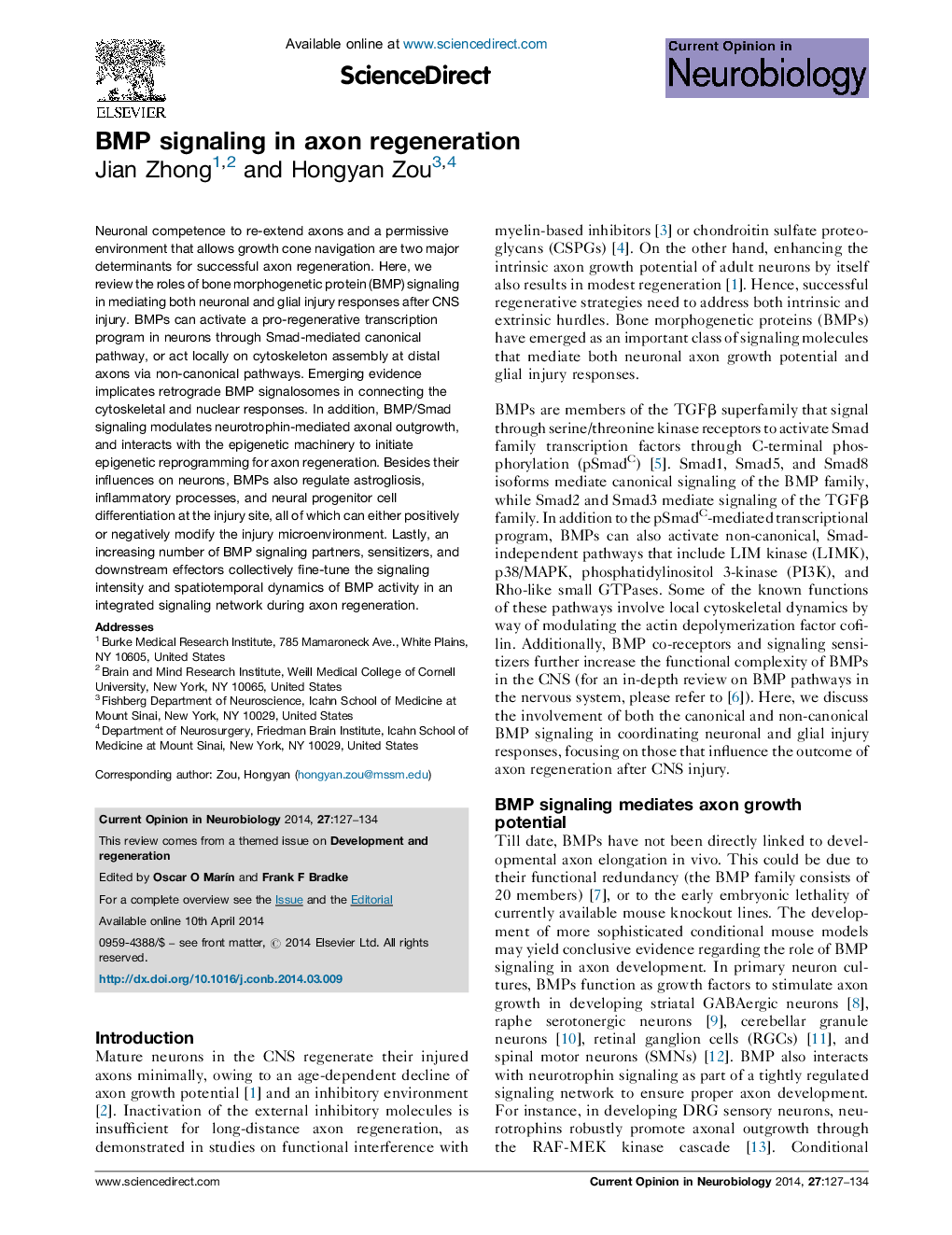| Article ID | Journal | Published Year | Pages | File Type |
|---|---|---|---|---|
| 6266806 | Current Opinion in Neurobiology | 2014 | 8 Pages |
â¢BMP regulates axon growth potential via Smad1-mediated canonical signaling.â¢BMP mediates cytoskeletal assembly in distal axon via non-canonical pathways.â¢Retrograde signalosomes couple cytoskeletal and nuclear effects of BMP.â¢BMP coordinates neuronal and glial injury responses after CNS injury.
Neuronal competence to re-extend axons and a permissive environment that allows growth cone navigation are two major determinants for successful axon regeneration. Here, we review the roles of bone morphogenetic protein (BMP) signaling in mediating both neuronal and glial injury responses after CNS injury. BMPs can activate a pro-regenerative transcription program in neurons through Smad-mediated canonical pathway, or act locally on cytoskeleton assembly at distal axons via non-canonical pathways. Emerging evidence implicates retrograde BMP signalosomes in connecting the cytoskeletal and nuclear responses. In addition, BMP/Smad signaling modulates neurotrophin-mediated axonal outgrowth, and interacts with the epigenetic machinery to initiate epigenetic reprogramming for axon regeneration. Besides their influences on neurons, BMPs also regulate astrogliosis, inflammatory processes, and neural progenitor cell differentiation at the injury site, all of which can either positively or negatively modify the injury microenvironment. Lastly, an increasing number of BMP signaling partners, sensitizers, and downstream effectors collectively fine-tune the signaling intensity and spatiotemporal dynamics of BMP activity in an integrated signaling network during axon regeneration.
